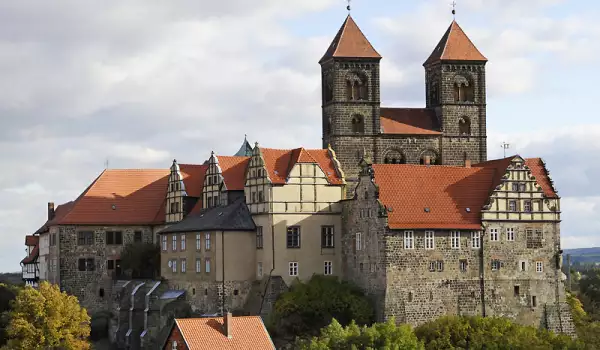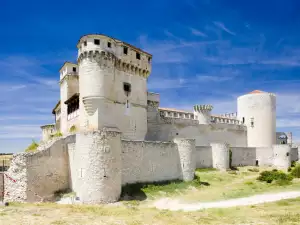Quedlinburg Castle

In 1994 the old town of Quedlinburg with its towering hill of beautiful Quedlinburg Castle were included in the list of World Heritage by UNESCO. The protected area is an area of more than 80 hectares. It went under the protection of the organization because it is an excellent example of a modern European city which has managed to preserve in excellent condition its medieval monuments.
Throughout the old part of Quedlinburg you can see unique buildings, preserved from Roman times, and half of the perfectly preserved wooden houses. City Quedlinburg is located in the north of the Harz mountains, in the Harz region of the western part of Germany's Saxony Anhalt area.
The history of the castle began in 1129 when this place aquires the Basilica St. Servatius as the successor of an earlier Roman building. Even in those centuries, the building was impressive not only in size and its facade, but also the interior and decoration of the walls. Today the Gothic hall holds choir performances which are above the basement and can be seen only from outside the building.

The interior of the church, was an attempt to recreate the impression of pure Roman architecture by the addition of the apse wall. Interior they built on the principle of rotation the Saxon articulated columns and pillars, which divide the castle into a few wings. To the east lies a stairway leading to the offices of people and a vault room, where since 1993 are stored treasures of the church Quedlinburg, ancient artifacts and books. Before that they were stolen by an American soldier, but bought back and returned to the castle. In the basement are the tombs of the first German King Henry I and his wife Matilda.
The religious building undergoes its final transformation in a Renaissance castle in 16th and 17th century. Today the castle hosts a fascinating museum, which is managed by the Quedlinburg municipality. In recent years, the hill in which is built Quedlinburg Castle is collapsing and this creates situations of risk to the integrity of the castle.















